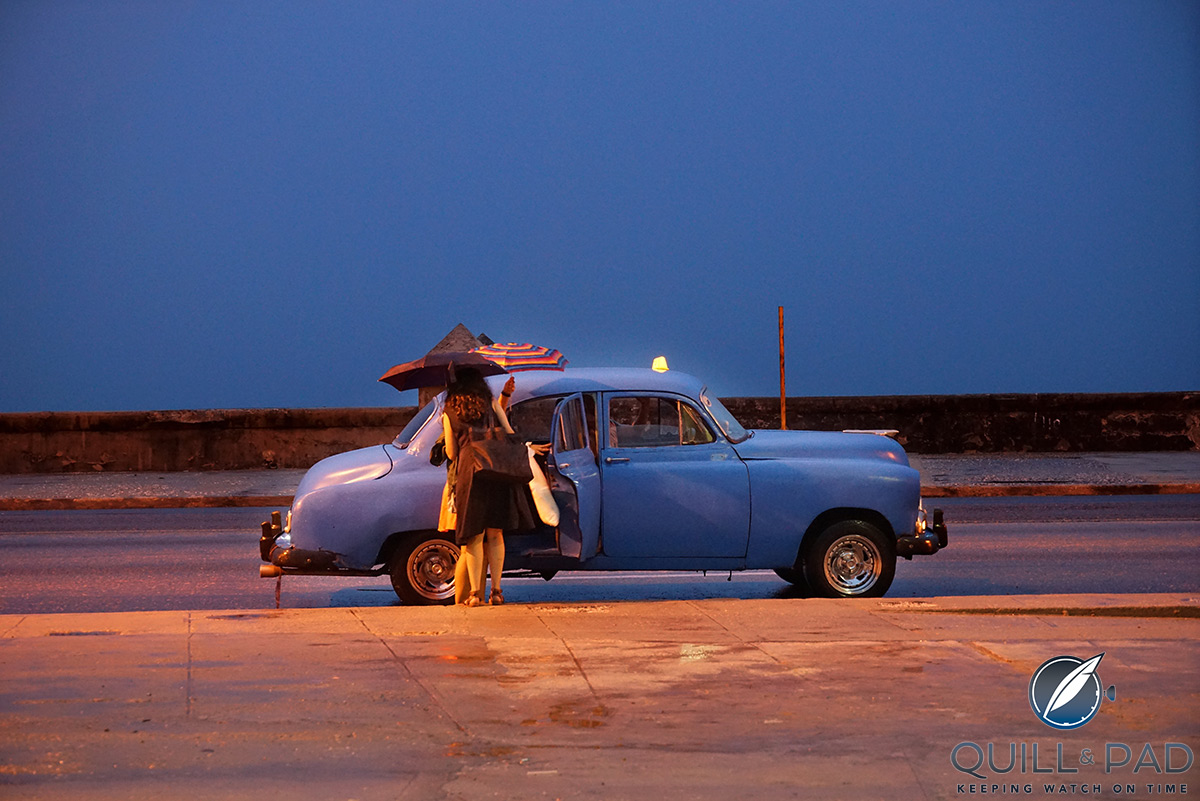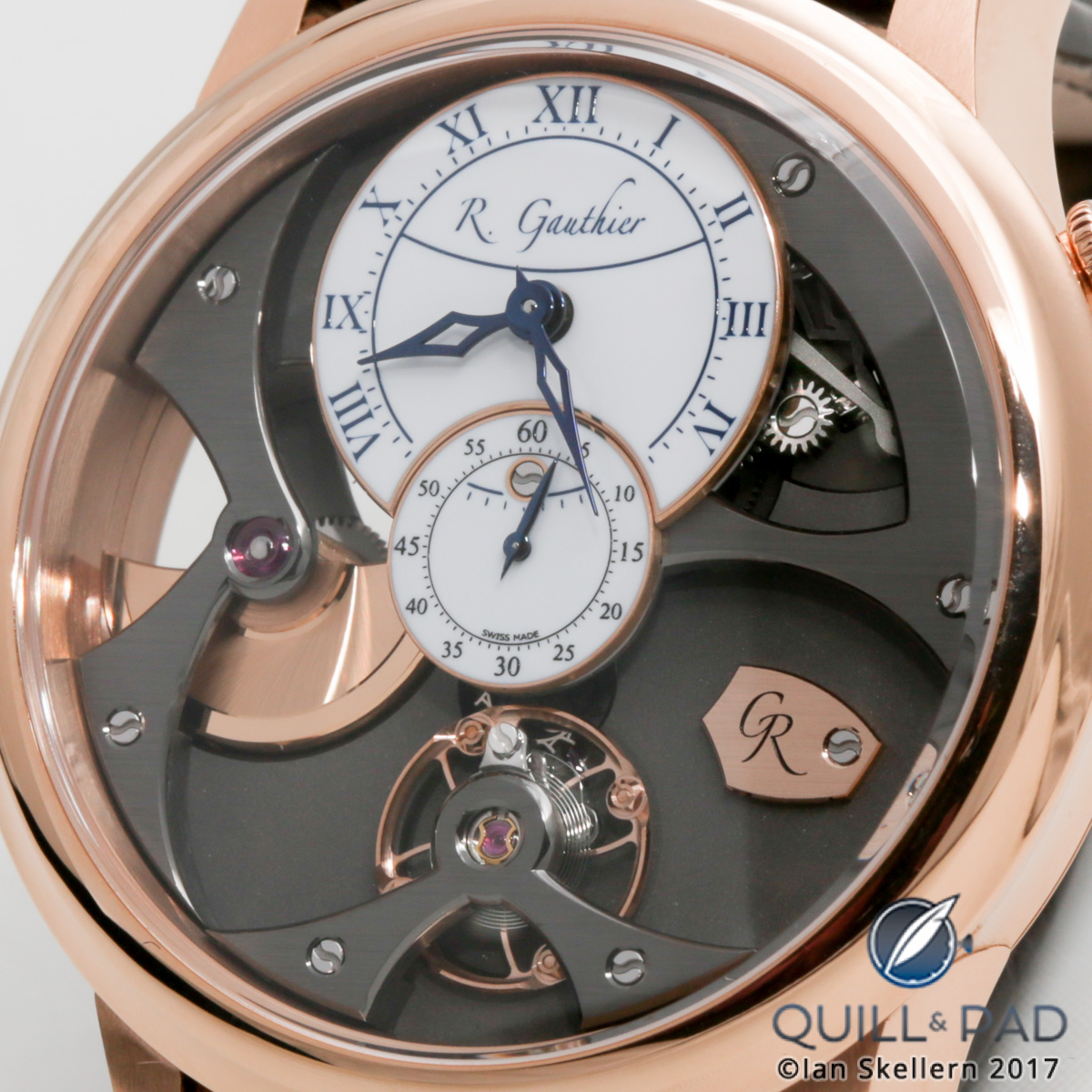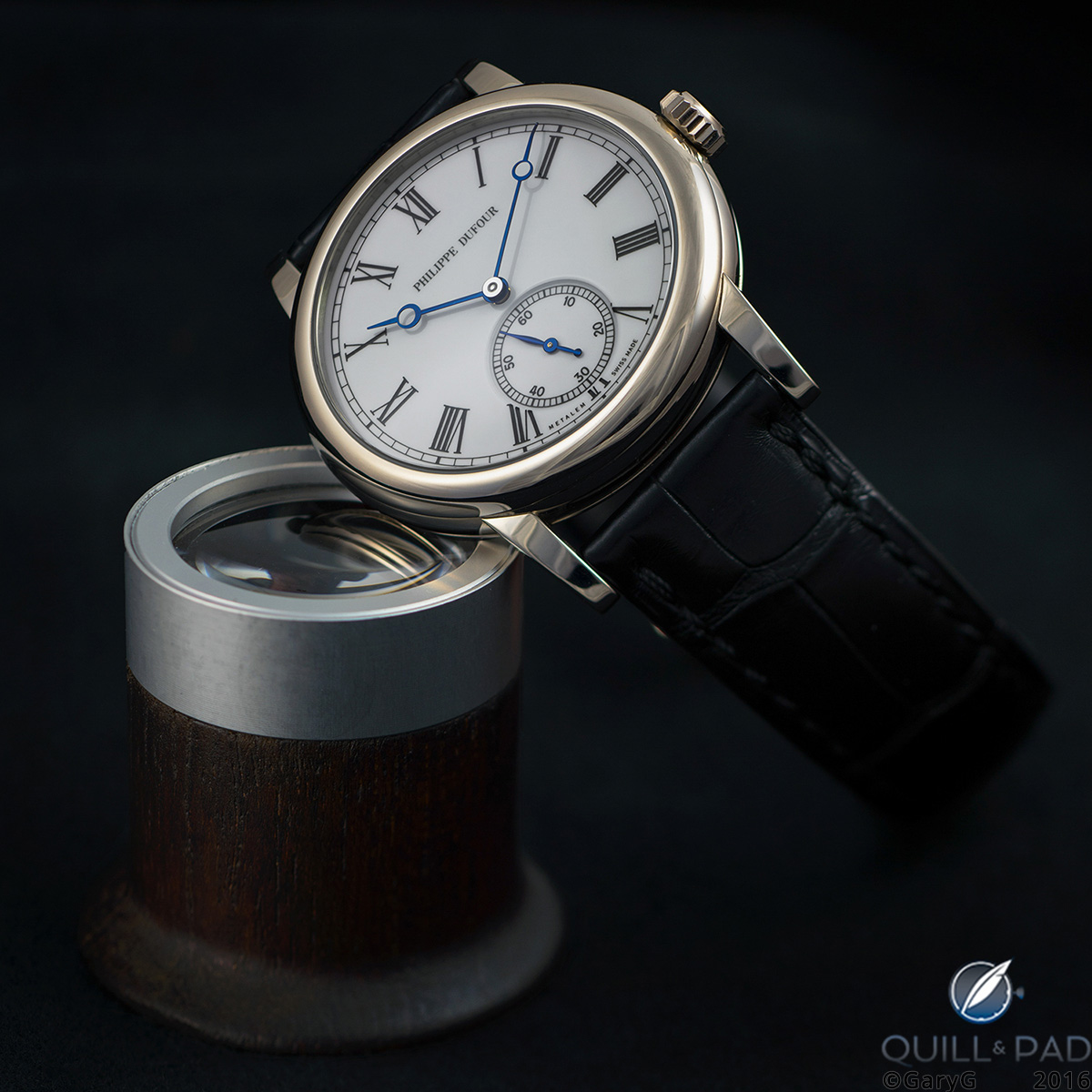
Whenever I think about a watch made by an independent watchmaker, a certain recollection comes to mind – one that could explain my passion (and for that matter, most likely the passion of the entire Quill & Pad team) for timepieces created by masters with diminutive production but gargantuan horological expertise.
This particular story involves a watch brand, a trip to Switzerland, and what is normally a very casual thing: lunch.
I was on one of the many watch trips to Switzerland most serious watch journalists take to remain current in the field, and between visiting two manufactures our charming host took us for lunch.
We were told it would be a special place, not posh, very traditional, and 100 percent family run.
Remarkable were the delicious truffle ravioli and the best caprese salad I’ve ever had. However, what stuck out in my mind was not just the great food, but the thing that made it so entirely memorable: the authentic Italian mama figure and her sons, who were responsible for our exquisite food.
When this engaging culinarian walked into the dining room with a plate of freshly made cantucci for dessert, it felt like being in a home; you could actually interact (sort of, anyway, as she didn’t speak English) with the person who took the great care in making this impressive food.
Translating cuisine into horology
It was so special I would wish to visit there one day again. And in much the same way I always look forward to meeting the great independent watch creators.
This feeling is precisely what one great watchmaker and close friend once told me when I asked him how he would convince me to buy one of his watches rather than one made by a big brand.
His reply was typical of this genre, “When you buy a big brand, you buy from someone you don’t actually know or who has been gone for a long time. When you buy independent, you actually buy from someone who made that watch with his or her heart, passion, and imagination.”
And while that single sentiment could be the entire content of this editorial, I’d like to elaborate a bit more.
There is no doubt that once you decide to spend a significant amount of your own money on a mechanical watch, you want it to be special in many ways. You want it to be personal, exclusive, and as close to bespoke as possible.
You also want the quality to be impeccable and handmade like the old days.
Let’s face it: a majority of the watches crafted today have very little in common with the way the old watchmakers worked, bent over their benches with a set of old-school tools and a loupe precisely positioned over one eye.
Currently, with a very few notable exceptions, watches are primarily made utilizing computer-controlled machinery, 3D printing, marketing, and lots of PR. Conversely, independent watchmakers make timepieces the old-fashioned way, at their own pace.
As much as possible is done by hand: some still manually create drawings, use vintage tools, and maintain quasi-bizarre machinery that often looks strange to the modern eye.
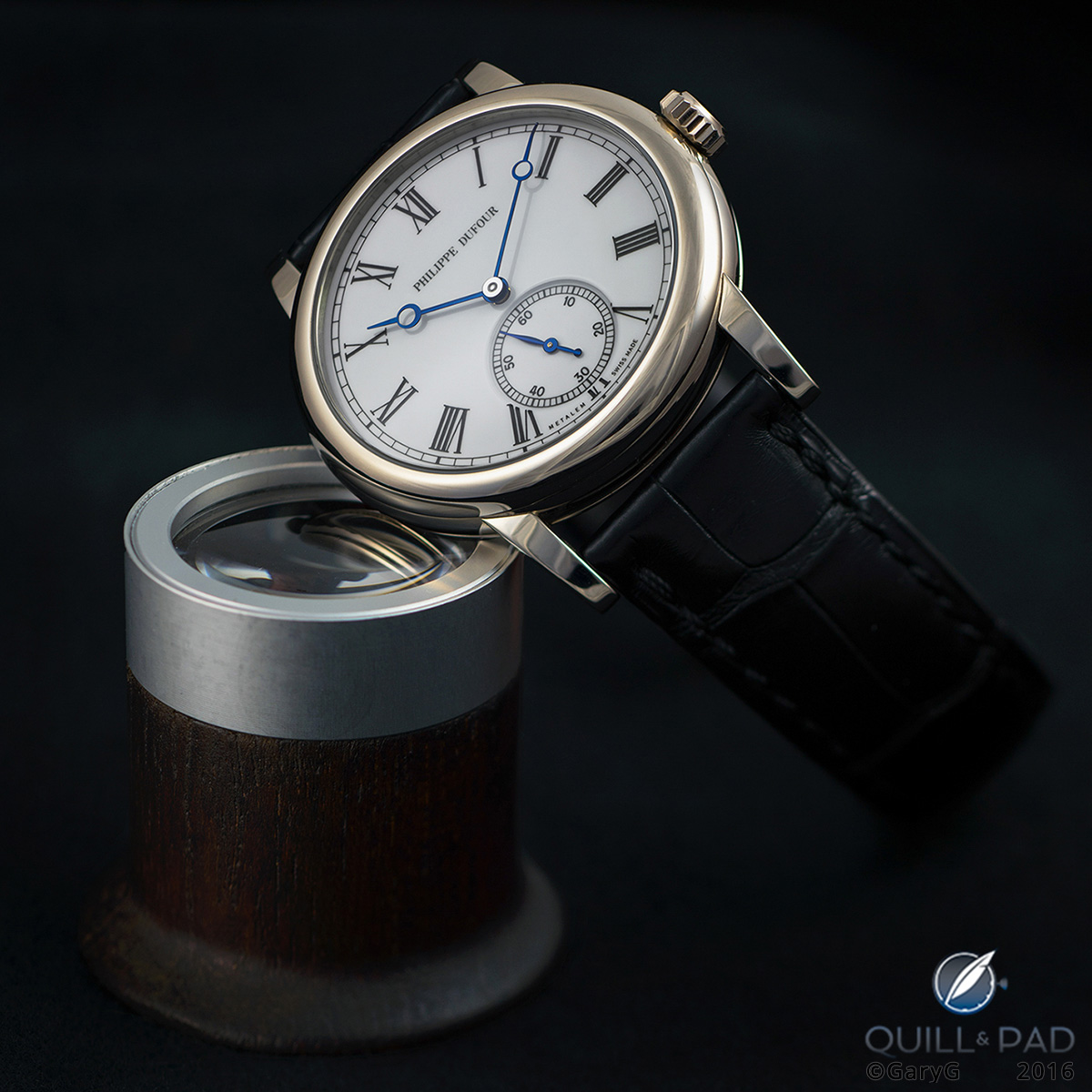
Philippe Dufour Simplicity in white gold
Some independent watchmakers take this craft to the most extreme, making and finishing as much as possible on their own. Philippe Dufour, for example, works in his small workshop in a tiny Swiss village in the Vallée de Joux painstakingly finishing each tiny piece of his marvelous timepieces.
Dufour and some of his contemporaries are living (and working) legends, and I’d go as far as to say that Dufour’s Simplicity might be the single greatest time-only watch ever made (right, GaryG?).
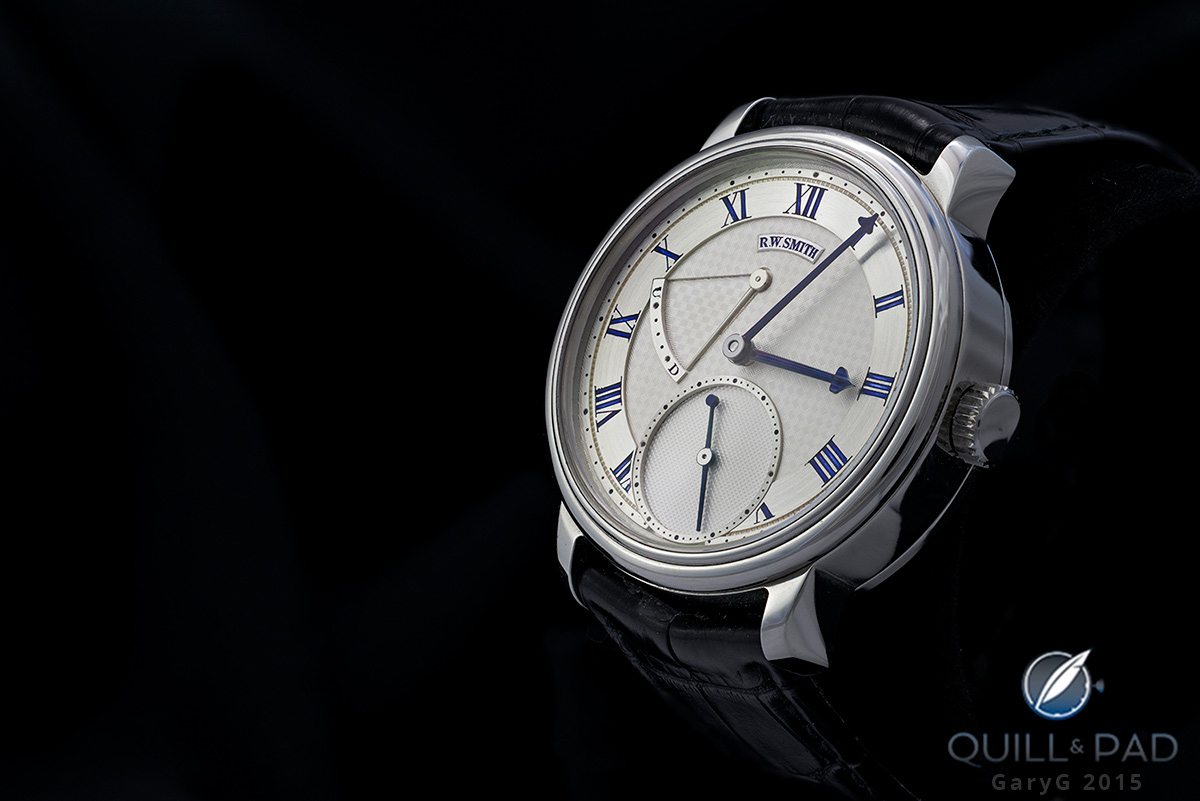
Roger Smith Series 2
Then there is Roger W. Smith, the horological heir to the late, great George Daniels. The Isle of Man off the English coast is home to his atelier of magic: it is the birthplace of an amazing quality of watchmaking, done predominately “à la main.” (See Roger Smith Series 4 Triple Calendar and Behind The Lens: Roger Smith Series 2.)
Smith’s YouTube channel boasts a ten-part video series (almost 60 minutes in total) of how a hand is made, heat-blued, and finished. Did I watch it? Yes . . . twice. It’s that mesmerizing.
Creativity sparks passion
Creativity is another word that sparks my passion for independents.
And creativity is by no means limited to the indies, but let’s be honest here – they do master it best.
While big players stick to the “what sells” formula that often bases upon its so-called brand DNA (whatever that is), the boutique brands and independent makers have made the word “creativity” their collective motto.
My favorite tagline is “A creative adult is a child who survived,” which was coined by none other than Maximilian Büsser. His boutique brand MB&F stands proud for creating so-called kinetic machines that also happen to tell the time.
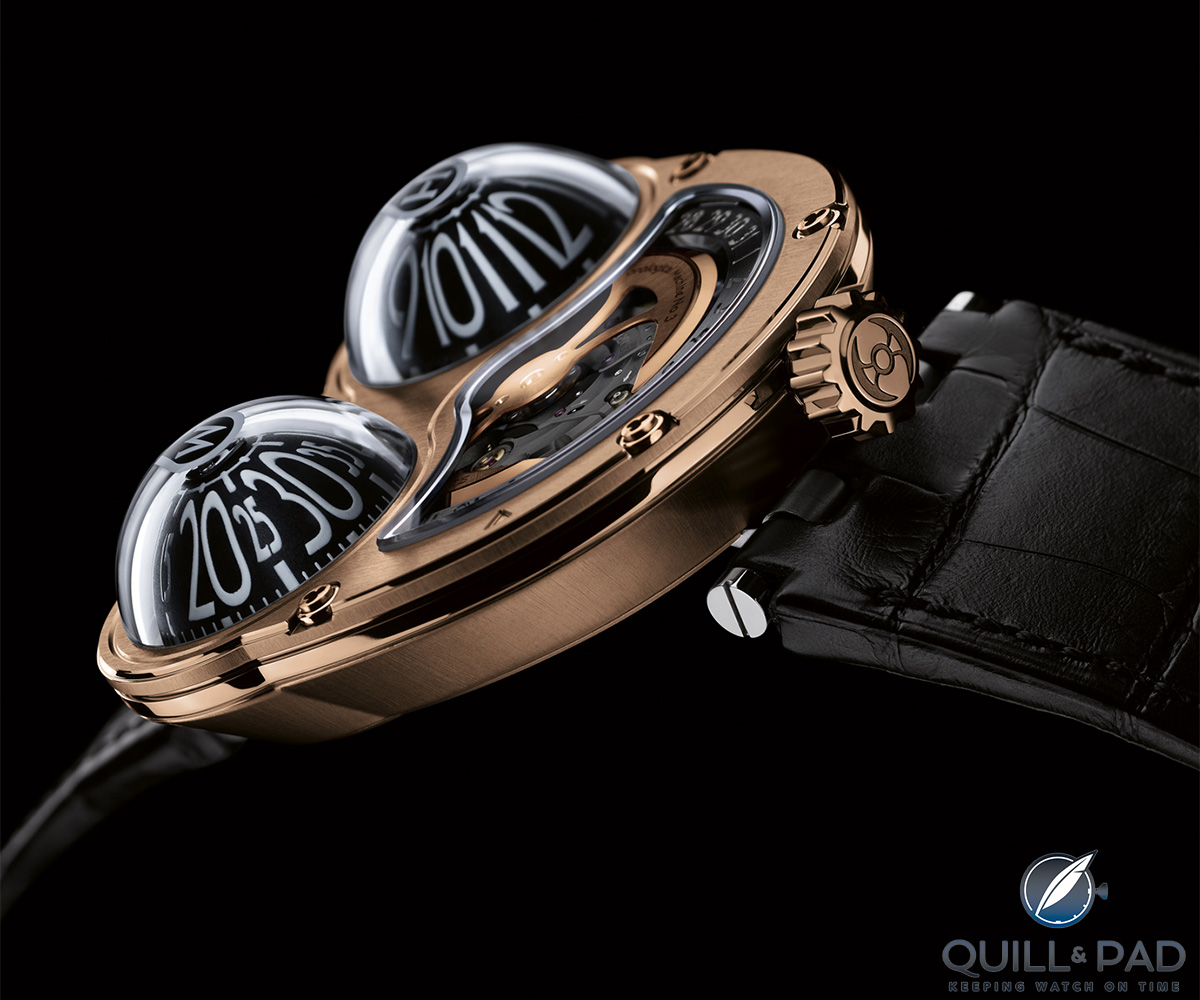
The MB&F HM3 Fire Frog
Büsser creates from his childhood dreams and memories, supported by the design skills of esteemed watch designer Eric Giroud. My favorites include Horological Machine No. 3, which looks like a wide-eyed frog; Horological Machine No. 4 Thunderbolt looking like a jet engine for the wrist; and the latest HM7 Aquapod – a pseudo diver’s watch that Captain Nemo could easily have worn on board his Nautilus.
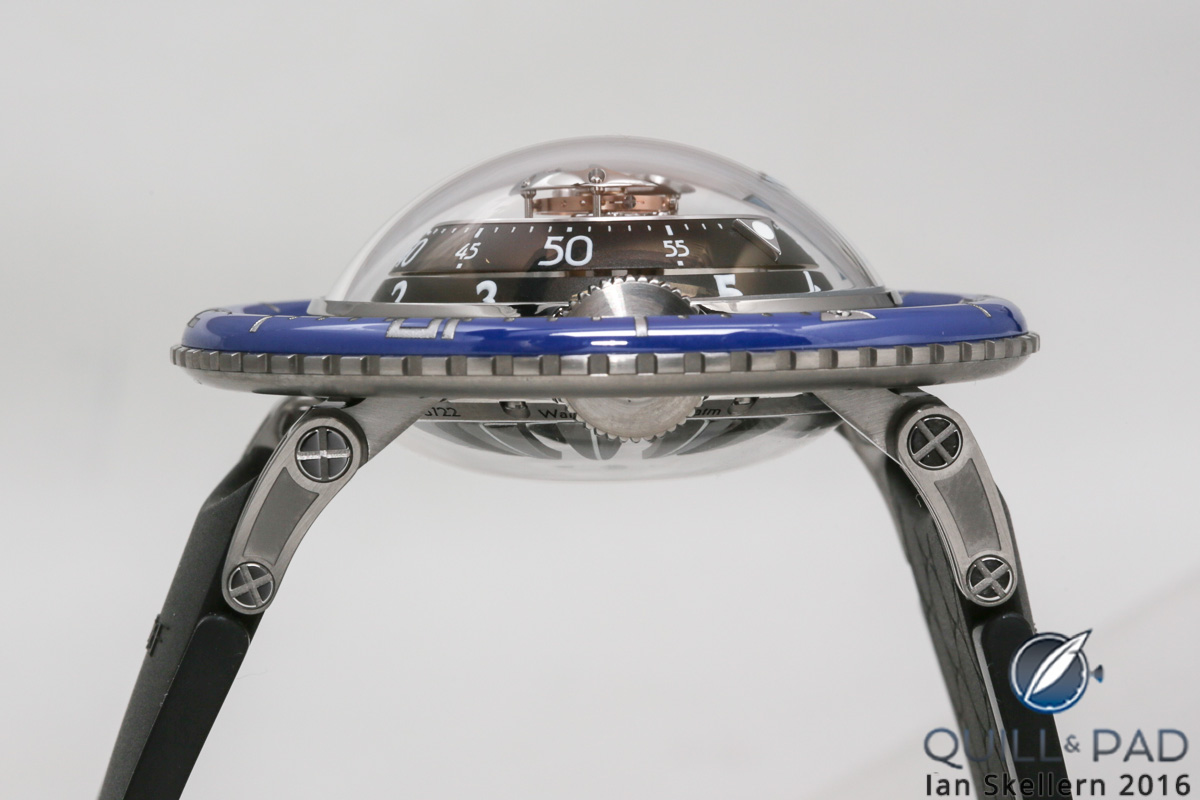
MB&F HM7 Aquapod in profile
What comes out of MB&F’s “friendly” collaborations never ceases to surprise, much like the pieces made by Urwerk. The creative duo of Felix Baumgartner and Martin Frei decided (probably in some moody bar in Zurich) that the way we usually indicate time is honestly boring, and we all deserve a new, fresher solution.
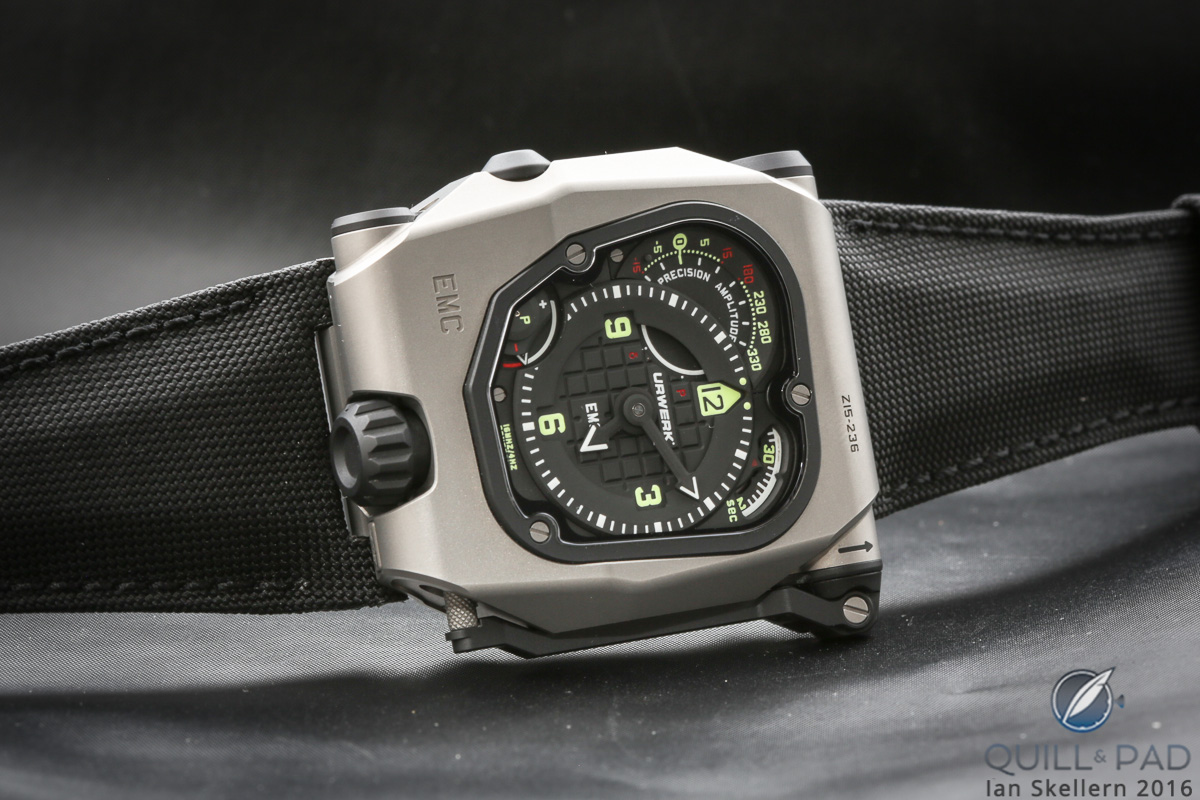
Urwerk EMC2
Each Urwerk watch redefines the very basis of classic watchmaking in both its mechanics and aesthetics. From thoughts to words and, finally, concepts, crazy watches were born that are both creative and revolutionary that still maintain a quiet respect to tradition.
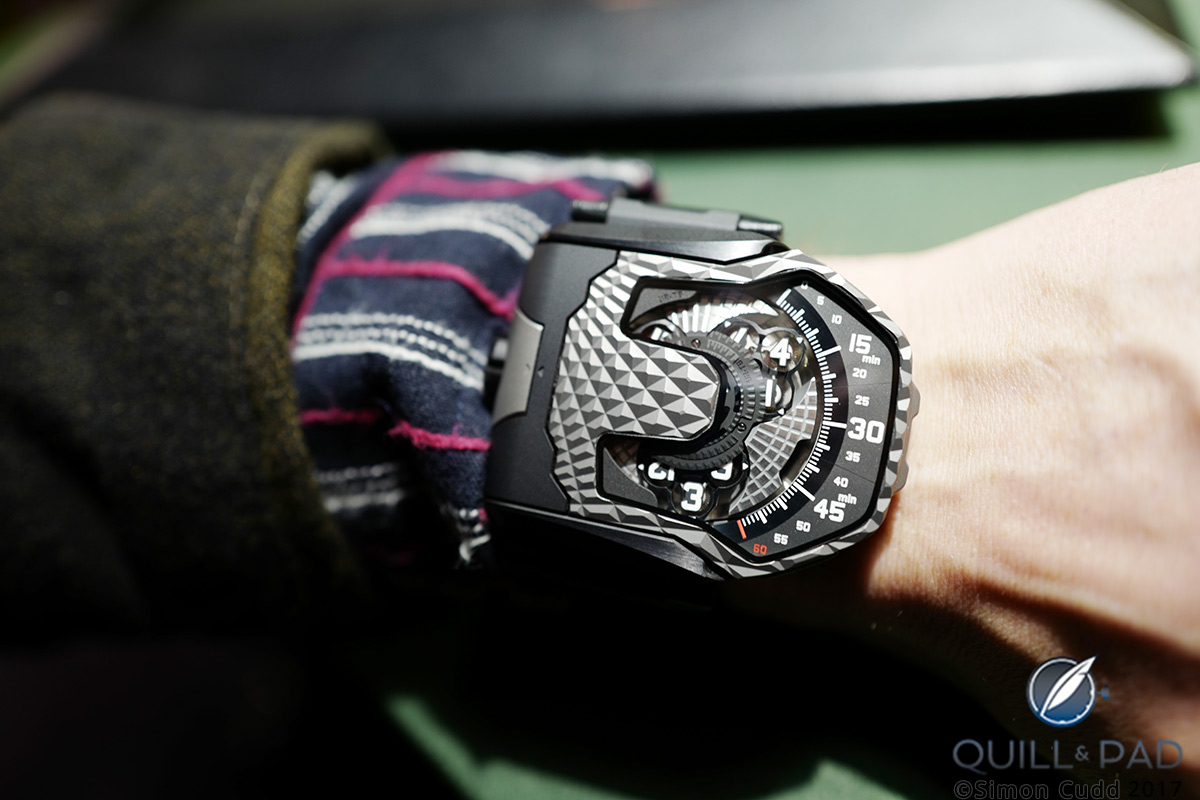
Urwerk UR-T8 Transformer on the wrist
That respect is the common ground that makes the fraternity of independent watch creators so precious: they all spring from an old-school way of thinking about watches with a fresh and open mind.
Independent watchmakers usually sign their creations with their own names, so the responsibility is basically the same as raising a child and then having to take responsibility for their actions.
The risk is immense and profit might be slim, but the creation process is priceless. They may not be able to put food on the table or a roof over their heads with it, but history books will certainly welcome them with arms wide open.
And for us consumers it’s like buying piece of history while creating it at the same time.

Caprese salad (photo courtesy Rainer Zenz/Wikipedia Commons)
And in the end it leaves you – the consumer – with an important choice: would you rather have a hamburger from a faceless chain restaurant or fresh caprese from a proud Italian chef?
Łukasz Doskocz is the editor-in-chief of the premier Polish watch publication, www.CH24.pl.
